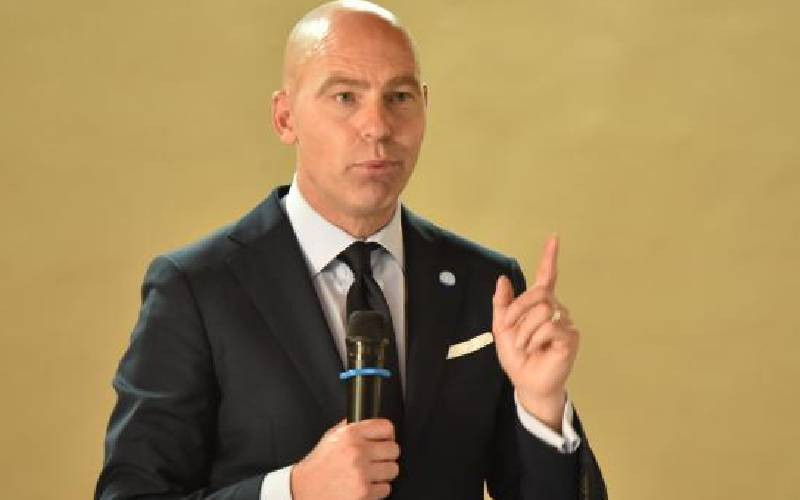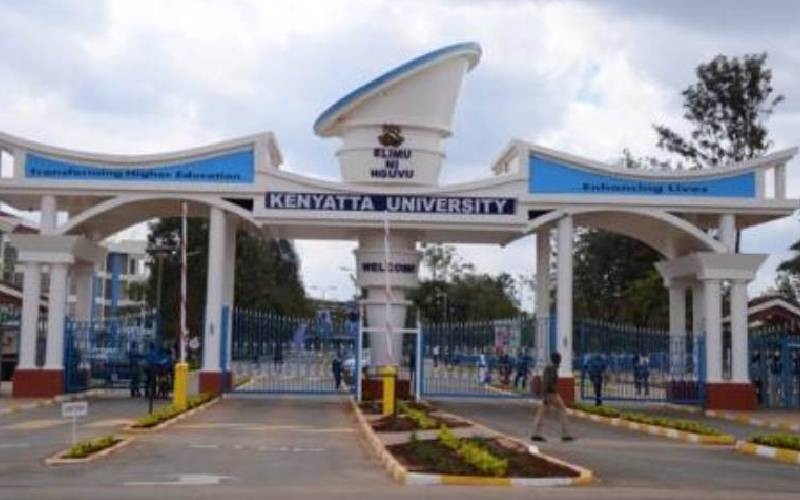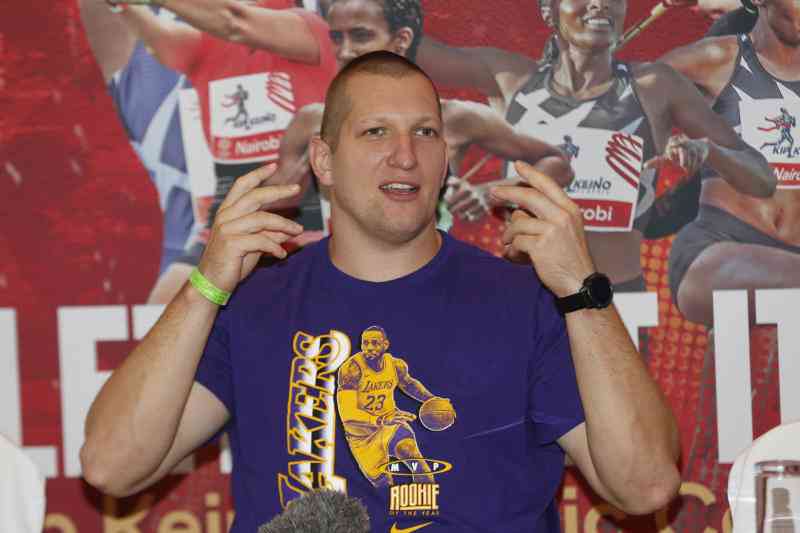 |
|
Julia Odhiambo PHOTO: COURTESY |
By LILLIAN ALUANGA-DELVAUX
Sometime in 1974, a woman in her mid thirties made history as Kenya’s first female assistant minister.
She had just quit her position as an associate professor at the University of Nairobi to plunge into politics and clinched the Funyula Constituency seat.
So impressed by her performance was then President Jomo Kenyatta, that he appointed Prof Julia Ojiambo, assistant minister for Education.
Today, nearly 40 years later, the scenario where women were relegated to the back burner in politics has changed.
At least six ministries are today headed by women. The composition of women has also improved in the Legislature, from one elected MP to over 60, in addition to 16 nominated senators and several others nominated on the 12 slots shared among political parties.
But the journey to realising these gains has been anything but easy, spanning decades to produce women that fought through a hostile political environment.
From Chelagat Mutai, to Grace Onyango, Phoebe Asiyo, Jael Mbogo, Martha Karua, Martha Koome, Charity Ngilu, Beth Mugo, and Prof Wangari Maathai, the Women’s Movement is replete with examples of individuals that made a mark.
Appointments
As the nation takes stock of its 50 years of independence, women leaders like Ojiambo believe the push for greater inclusion of women in governance is still far from over.
“Women have done well but we are not yet there. Before independence few women had the skills to take up key appointments, and we couldn’t do much beyond Maendeleo Ya Wanawake. But today things are different,” she says.
“I should have been appointed a Cabinet minister in 1974. But the yardstick used then was different because some people even questioned whether a woman could address a Cabinet meeting,” says Ojiambo, chair of the Labour Party of Kenya.
That would change in later years, with Dr Sally Kosgei rising to head the Civil Service during President Moi’s tenure.
Kenya’s hosting of the 1985 United Nation’s Third World Conference on women is believed to have catalysed the appointment of the country’s first woman Cabinet minister – Nyiva Mwendwa – after the 1992 General Election. Prior to her appointment the few women in government were largely relegated to the assistant ministerial position, with hardly any serving as Permanent Secretaries.
“Those years were very difficult for women who tried to get into politics and those that did had to toe the line,” says Supreme Court judge Njoki Ndung’u, a former nominated MP.
Stay informed. Subscribe to our newsletter
During Kanu’s reign, Maendeleo Ya Wanawake Organisation stood out as a key player in mobilisation of grassroot support. But recent years have seen the once influential organisation lose its shine.
“Maendeleo Ya Wanawake should work with the Government to craft policies in agriculture, health and education, to address issues affecting women,” says a former chair of the organisation, Ms Asiyo.
As the clamour for multipartyism and Constitutional change grew louder in the 1990’s, a new crop of women leaders emerged in a period that registered accelerated growth in the women’s movement and establishment of groups like the Kenya League of Women Voters, Women’s Political caucus, and FIDA.
“The women leaders at this time were more pronounced in their push for recognition of women’s rights. We had Agnes Ndetei, Martha Karua, and Charity Ngilu, joining the opposition and even holding key positions within political parties,” says Ndung’u.
But this isn’t to say that the Women’s movement didn’t have its share of power struggles. A case in point is the passage of the IPPG deal and formation of the Kenya Women’s Political Caucus that pushed for inclusion of the women agenda into the Constitution. As matters moved to Bomas during the drafting of the Constitution, there appeared to be a generational divide between the older leaders, who identified more with Maendeleo Ya Wanawake, and the younger generation, that leaned more towards groups like FIDA.
“The Women’s Movement hasn’t been cohesive since. But it seems the differences have now been resolved with the older leaders taking on a mentorship role rather than competing with the younger ones,” says Ndung’u.
Perhaps the biggest leap for women came in the 2002 elections, when their numbers in Parliament rose to 18 and former President Mwai Kibaki appointed Charity Ngilu, Martha Karua and Linah Kilimo to the Cabinet.
Changing attitudes
That the increase in the number of women to elective and appointive positions can be attributed to minimum gender quotas in the Constitution is not in doubt.
But even then Asiyo says it has taken a consistent push by women to realise such gains.
Asiyo, who is credited for championing the 1997 Affirmative Action Motion in Parliament, credits the Women Movement for changing attitudes held by both men and women towards women’s participation in politics.
“The push for Affirmative Action gave us a good head start,” she says.
Today the Constitution outlaws gender discrimination, stipulating that no more than two thirds of any gender should hold elective or appointive positions. The same Constitution also protects women’s’ right to matrimonial property and land ownership.
Mbita MP Millie Odhiambo-Mabona, says while women’s participation in the country’s politics stretches prior to independence, their role in the Constitutional review process should not be overlooked.
“Women have done exceptionally well and their contributions stretch prior to the 50 years. But when history is written we rarely hear of the likes of Priscilla Abwao who participated in the constitution writing process and was for a while a lone voice among the women,” she says.
The General Elections in March- the first under a new
Constitution- recorded the highest number of women participants since independence, with over 150 vying for position of MP.
Hundreds battled it out for County Ward seats, but only 20 contested the Senate position, and an even lower number-five- ran for Governor.
While there appears to be consensus on the gains made in women’s representation since independence, there is still a feeling that the numbers are far from ideal when compared to other countries like
Rwanda, Mozambique, Uganda, South Africa, and Tanzania.
In 1963 Kenya had only 158 constituencies. Between that year and 1969, no woman was elected to parliament. Between 1969 and 1974 only one woman was elected to parliament. There was however an improvement between 1979 and 1983, when five women were elected. The numbers would reduce between 1983 and 1992, despite the number of constituencies rising to 188. Although the number of constituencies rose to 210 only four women were elected to parliament between 1997 and 2002.
In her assessment of women’s performance in the 2002 elections Prof Maria Nzomo, in an article titled “The 2002 General Elections in Kenya: Women’s Performance and Prospects in Parliamentary Politics,” notes that although the number of elected women decreased to four in 1997, there was an increase in those running for political office. It was in 1997 that Charity Ngilu became the first woman to vie for the presidency.
Since then, others like the late Professor Wangari Maathai and former Gichugu MP Martha Karua have also contested the position.
Harsh terrain
The Ninth Parliament (2002-2007) saw at least 10 women elected to the House and another eight nominated by political parties. The former Rift Valley Province alone had six MPs including Prof Hellen Sambili (Mogotio ) Dr Sally Kosgei (Aldai) and Prof Margaret Kamar ( Eldoret East). Other women that made it to parliament then include Dr Naomi Shabaan (Taveta), Bishop Margaret Wanjiru (Starehe), Esther Murugi (Nyeri) and Cecily Mbarire (Runyenjes). Those nominated included Amina Abdalla and Racheal Shebesh.
Prof Ojiambo maintains that the terrain is still harsh for women given their numbers, less than 30 per cent, in a House with over 400 legislators.
“Their numbers are few. But even then I don’t hear them. We want to see them articulate issues even outside Parliament,” she says.
 The Standard Group Plc is a
multi-media organization with investments in media platforms spanning newspaper
print operations, television, radio broadcasting, digital and online services. The
Standard Group is recognized as a leading multi-media house in Kenya with a key
influence in matters of national and international interest.
The Standard Group Plc is a
multi-media organization with investments in media platforms spanning newspaper
print operations, television, radio broadcasting, digital and online services. The
Standard Group is recognized as a leading multi-media house in Kenya with a key
influence in matters of national and international interest.
 The Standard Group Plc is a
multi-media organization with investments in media platforms spanning newspaper
print operations, television, radio broadcasting, digital and online services. The
Standard Group is recognized as a leading multi-media house in Kenya with a key
influence in matters of national and international interest.
The Standard Group Plc is a
multi-media organization with investments in media platforms spanning newspaper
print operations, television, radio broadcasting, digital and online services. The
Standard Group is recognized as a leading multi-media house in Kenya with a key
influence in matters of national and international interest.










